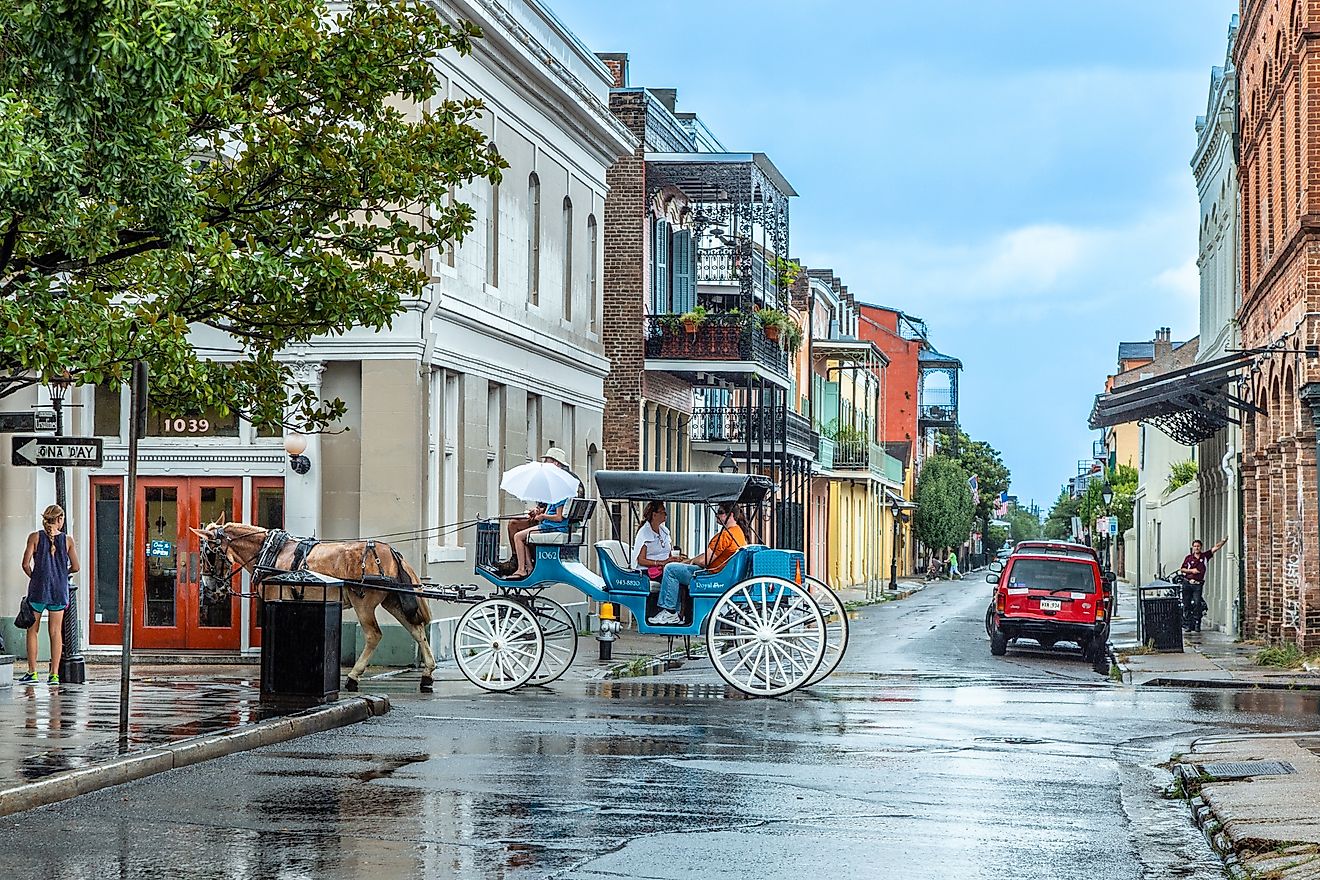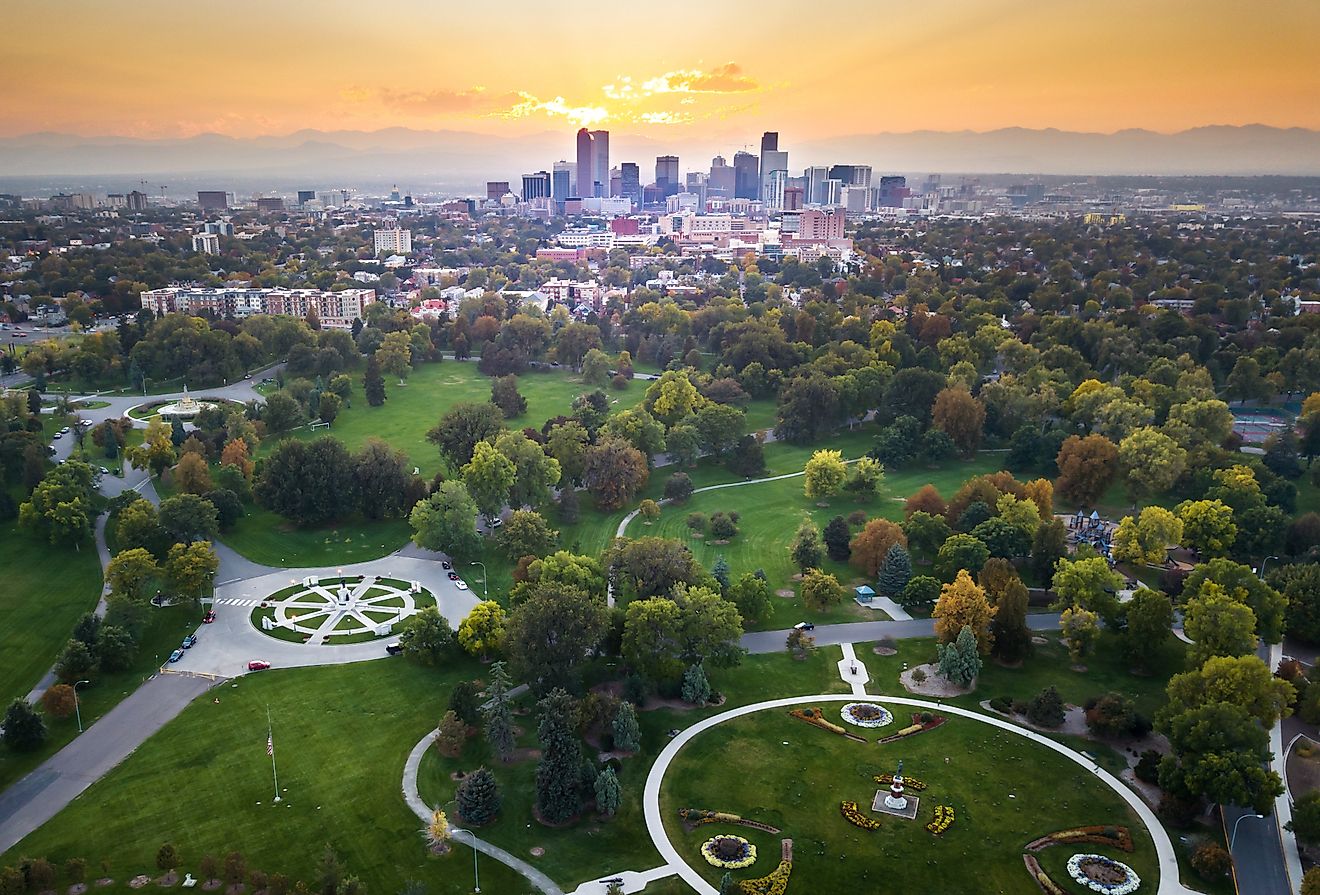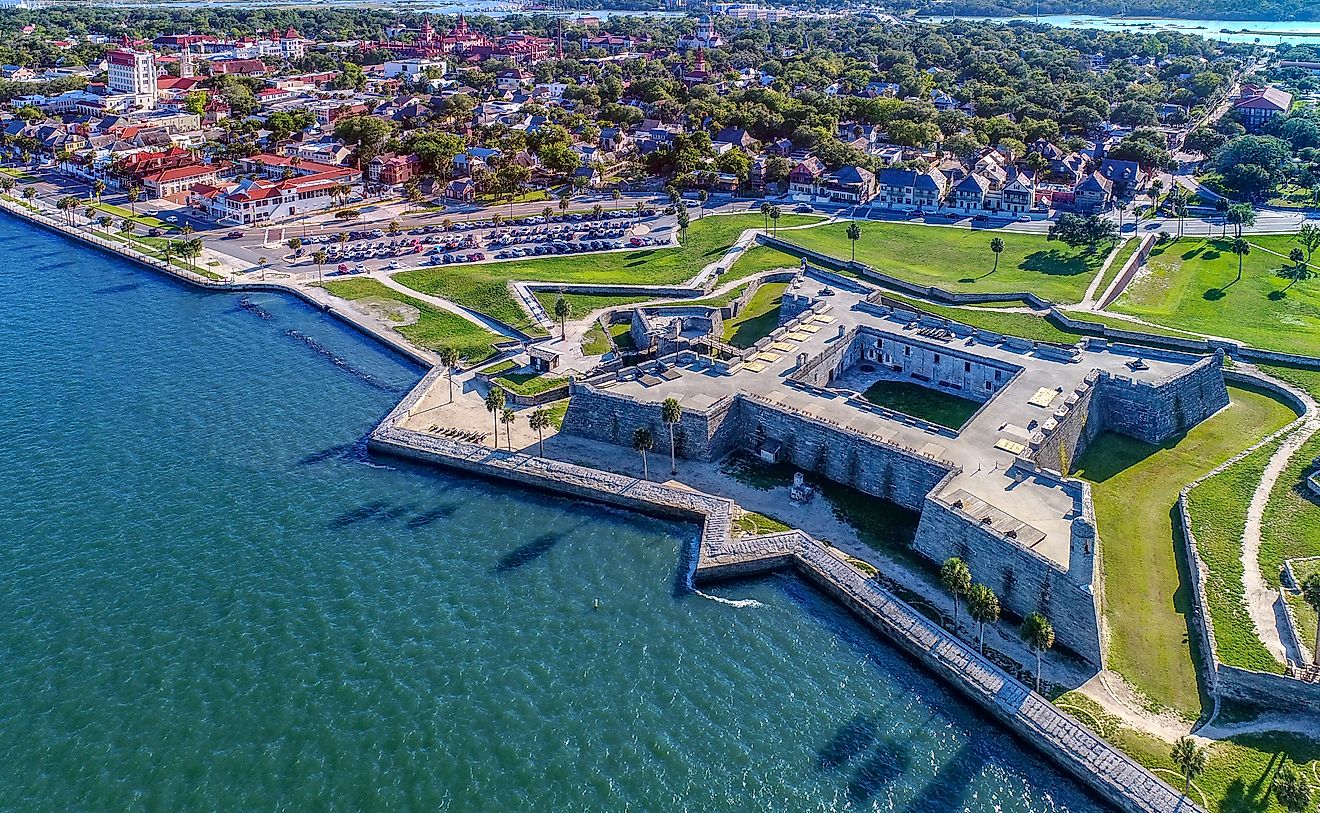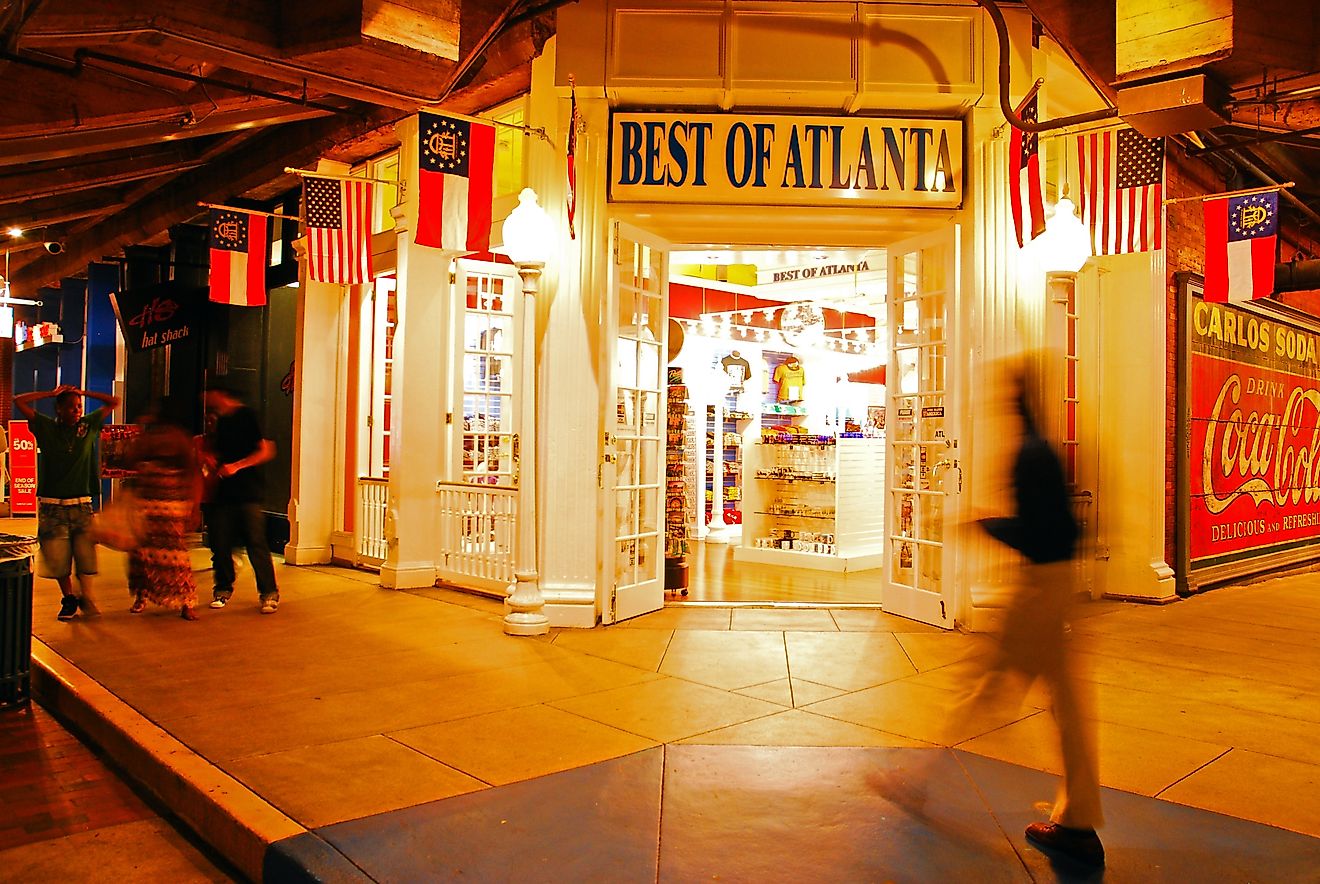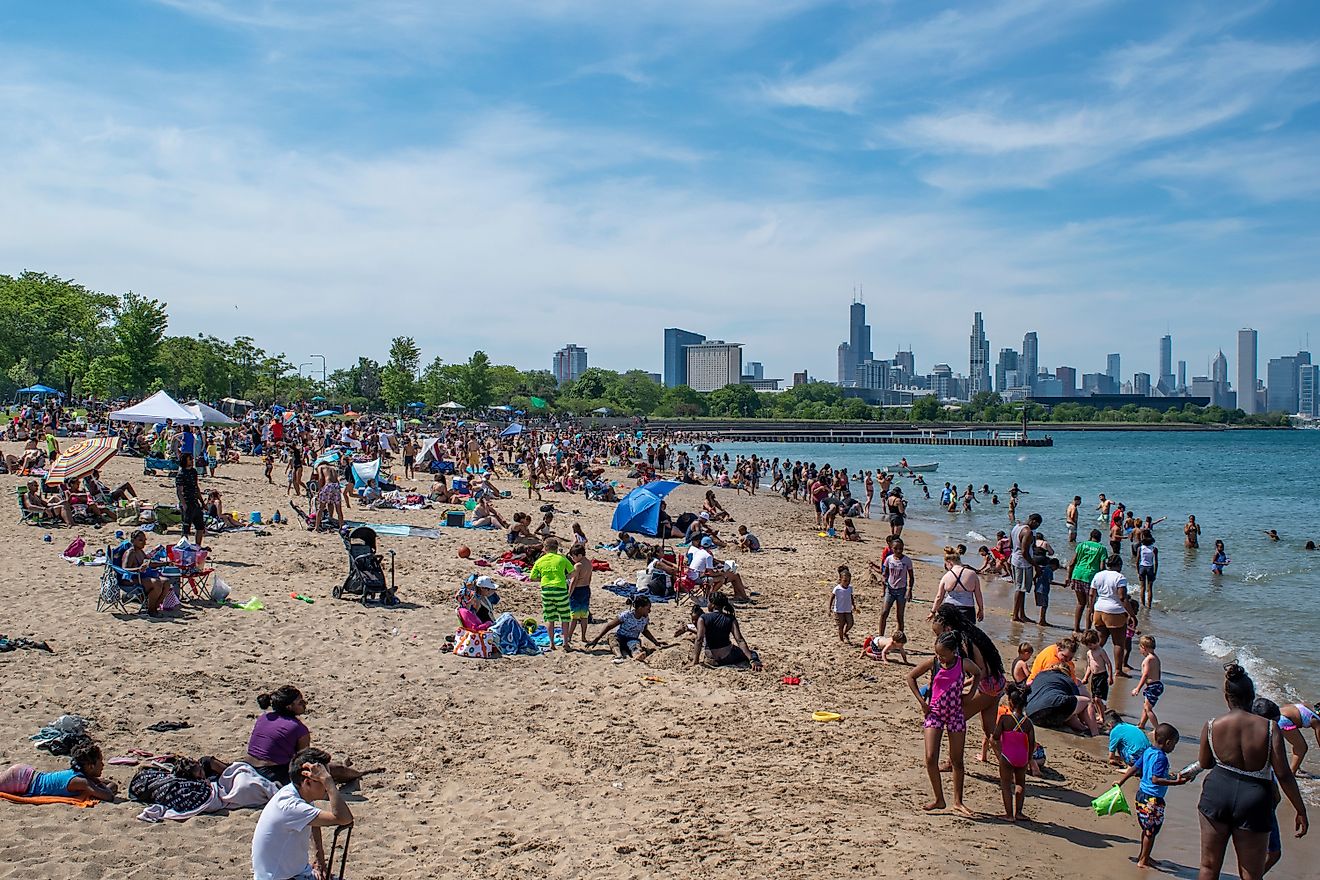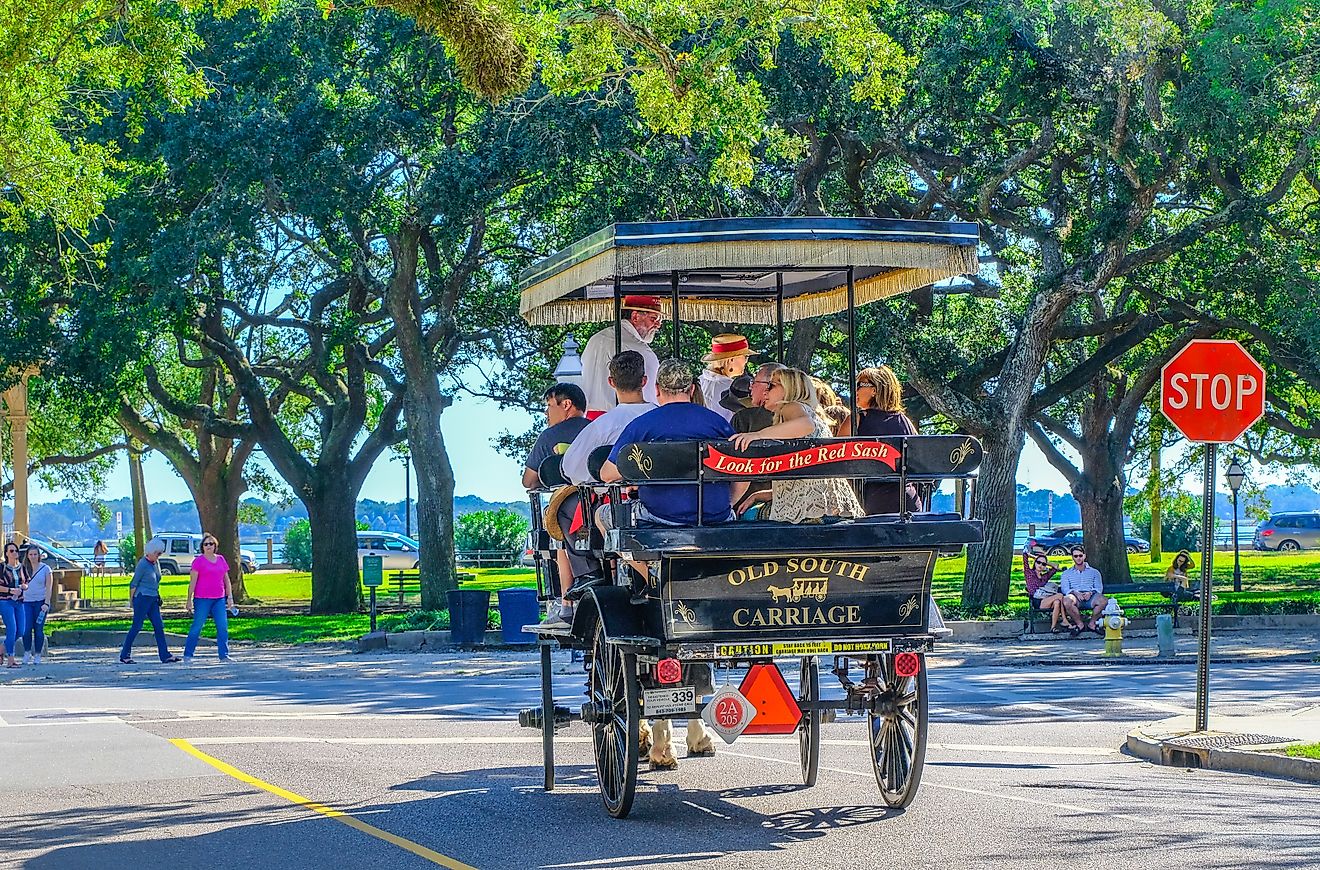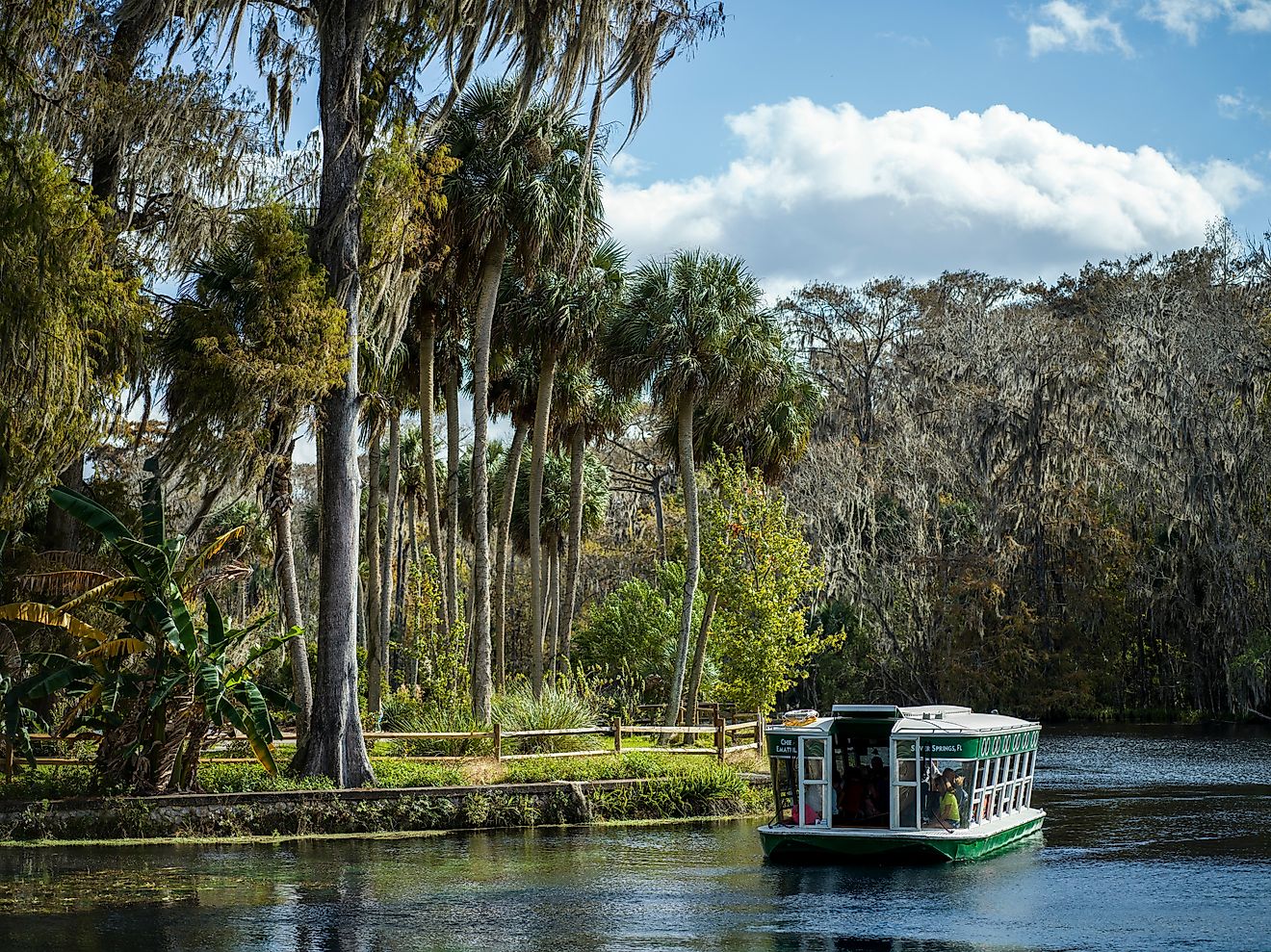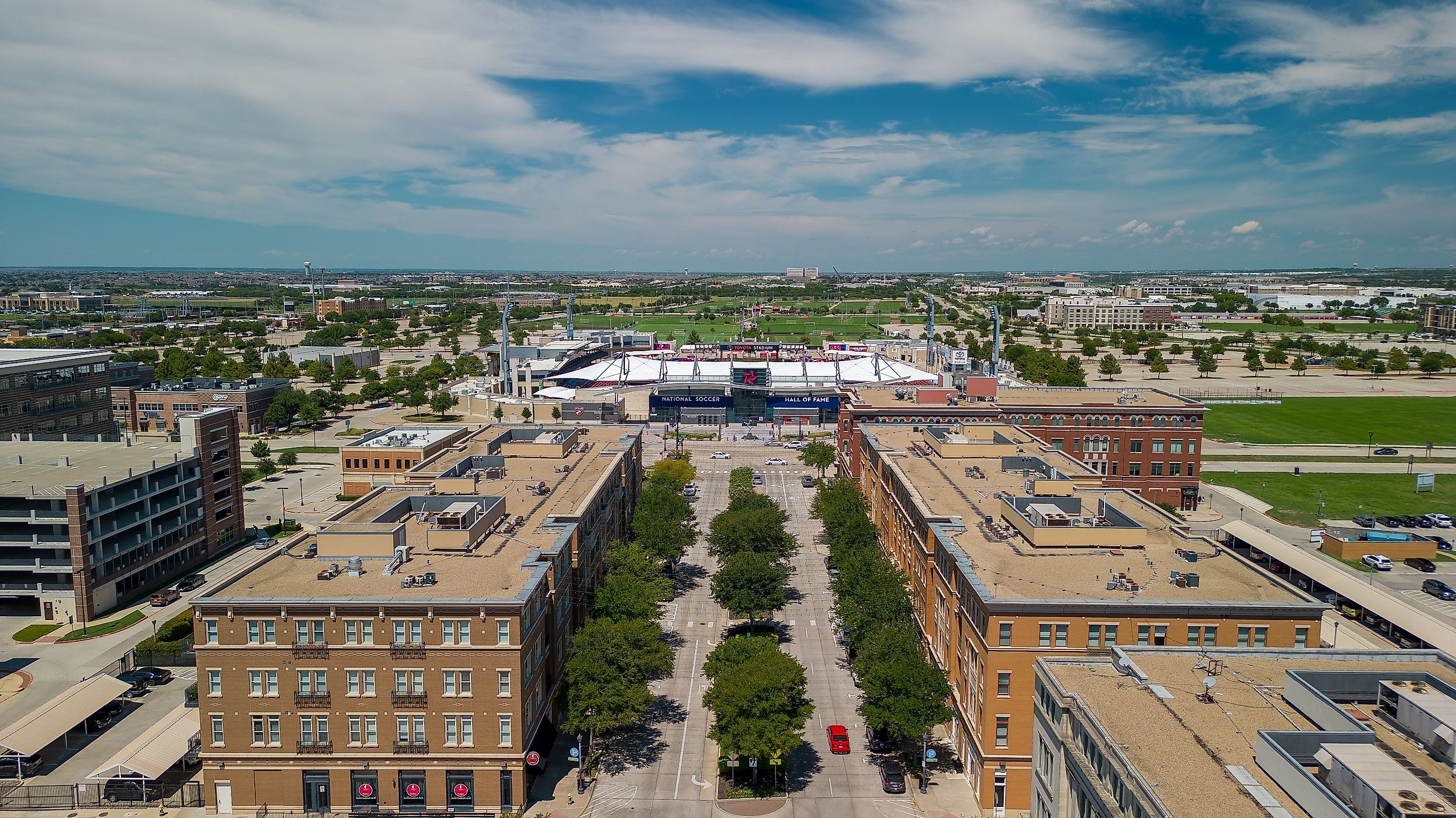
Why Some US Cities Don't Have a Downtown at All
Not every American city has a downtown. Some grew without a defined core, relying instead on multiple commercial hubs, neighborhood centers, and highway networks. These cities demonstrate that urban life does not always require a single, central business district. The reasons vary: some were intentionally designed this way, while others evolved because of geographic limitations, suburban expansion, or economic development patterns. Today, these cities thrive without a conventional downtown, offering residents convenience, space, and multiple centers of activity.
What Is a Downtown?
A downtown typically serves as the heart of a city. It concentrates offices, shops, government buildings, cultural institutions, and social spaces in one accessible area. Downtowns often serve as a gathering place for commerce, civic engagement, and leisure activities. They are usually walkable, have public transit access, and give a city a recognizable identity. In cities without downtowns, these functions are scattered across multiple smaller hubs. These cities demonstrate alternative approaches to urban planning that accommodate modern lifestyles and car-centric development.
Cities Without a Downtown
Irvine, California

Irvine is a master-planned city that emerged in the 1960s, designed to prioritize suburban neighborhoods and business parks over a central core. The city’s layout is defined by multiple nodes that provide services to surrounding areas. Each neighborhood has shopping centers, schools, parks, and offices, so residents rarely need to travel to a centralized downtown.
Irvine’s planning emphasized accessibility by car and avoided the congestion associated with traditional downtowns. The city’s dispersed design reflects intentional planning choices, blending residential comfort, economic development, and open space preservation.
Columbia, Maryland
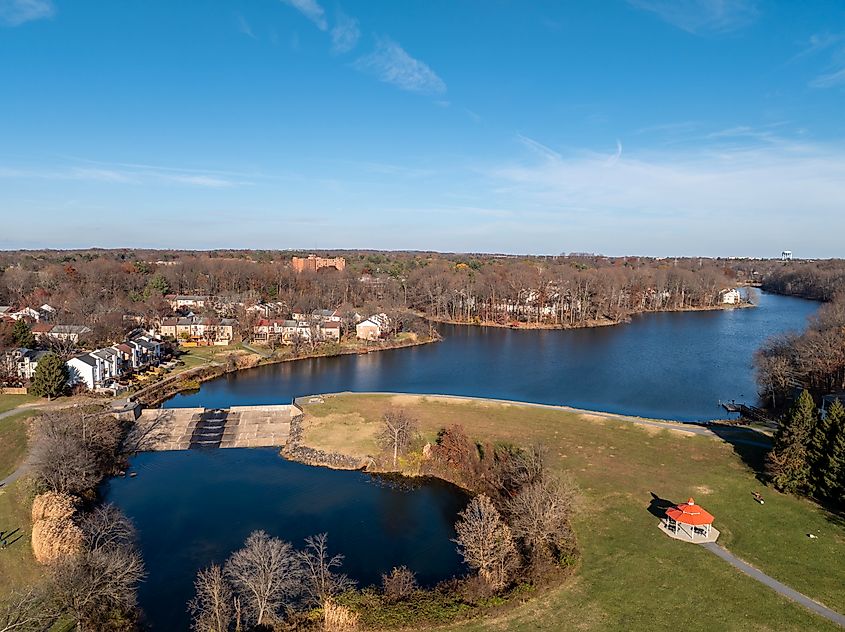
Columbia was conceived in the 1960s as a planned community intended to eliminate the social isolation common in suburban sprawl. City planners designed village centers, each with shops, offices, and recreational areas, distributing activity evenly across the city. This decentralized approach allowed residents to access essential services close to home while fostering neighborhood identity.
Columbia’s design prioritizes community cohesion within each village over a single downtown hub. The city’s layout demonstrates an innovative approach to suburban development, emphasizing livability, convenience, and multiple activity centers.
Pembroke Pines, Florida
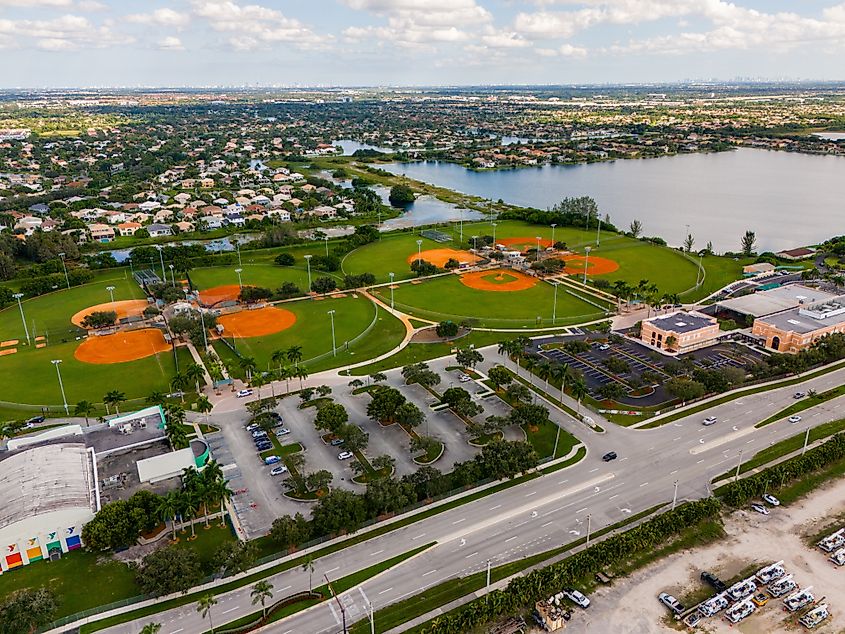
Pembroke Pines experienced rapid growth in the late 20th century along major highways rather than around a historical core. The city’s commercial and residential areas are dispersed, with retail, offices, and entertainment located in various nodes along roadways. This layout was shaped by suburban development trends and an emphasis on car accessibility.
Local malls, parks, and community centers serve as neighborhood hubs, substituting for a traditional downtown. Pembroke Pines illustrates how highway-oriented planning and post-war suburban expansion can create successful cities without a concentrated urban core.
Miramar, Florida

Miramar shares a similar development story with Pembroke Pines. The city was built with dispersed commercial hubs, residential neighborhoods, and highway connectivity in mind. Planning decisions during the mid-20th century emphasized automobile travel and accessibility, which resulted in a polycentric urban form.
Offices, retail, and recreational spaces are scattered, and there is no dense downtown. Residents navigate the city primarily by car, and social activities are centered around local hubs rather than a central core. Miramar demonstrates how suburban planning strategies shape urban landscapes and community interactions.
Anchorage, Alaska
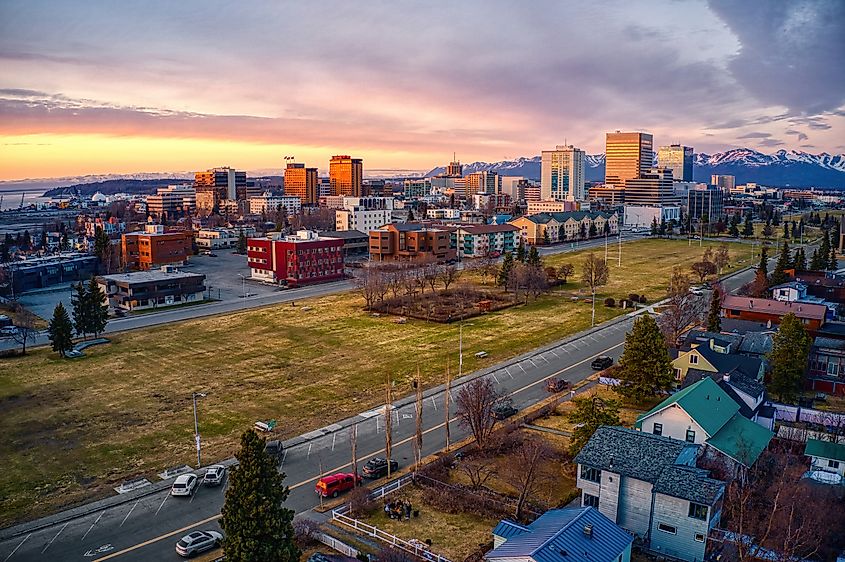
Anchorage is a city constrained by unique geography. Surrounded by mountains, rivers, and wilderness, development was pushed outward rather than upward. The downtown area is small and limited, and most commercial, residential, and industrial activity is spread across a wide area.
Anchorage’s layout reflects historical development tied to railroads, oil extraction, and military infrastructure. Geographic constraints and the city’s historical growth pattern prevented the formation of a traditional downtown. Anchorage shows how natural features and early economic drivers can influence urban form, creating a dispersed cityscape.
Kent, Washington
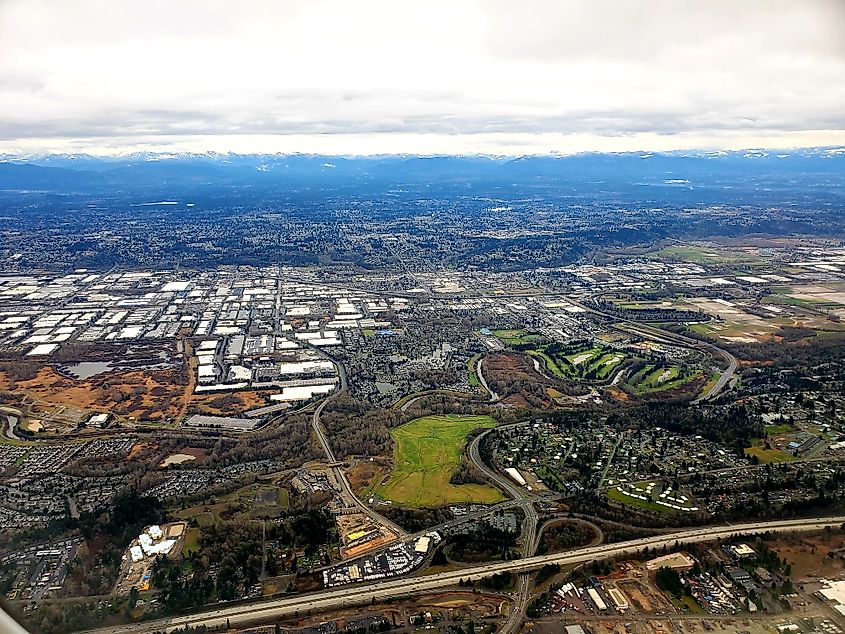
Kent, a city in King County, developed as a suburban and industrial hub without a central business district. Its growth was influenced by highway access, nearby Seattle, and industrial expansion, resulting in multiple commercial nodes. Residential neighborhoods are connected to shopping areas and offices across dispersed locations.
Kent’s decentralized design mirrors trends seen in post-World War II suburban planning, emphasizing car access and functional land use over a dense downtown. Residents rely on neighborhood centers for daily activities rather than a single urban core.
Frisco, Texas
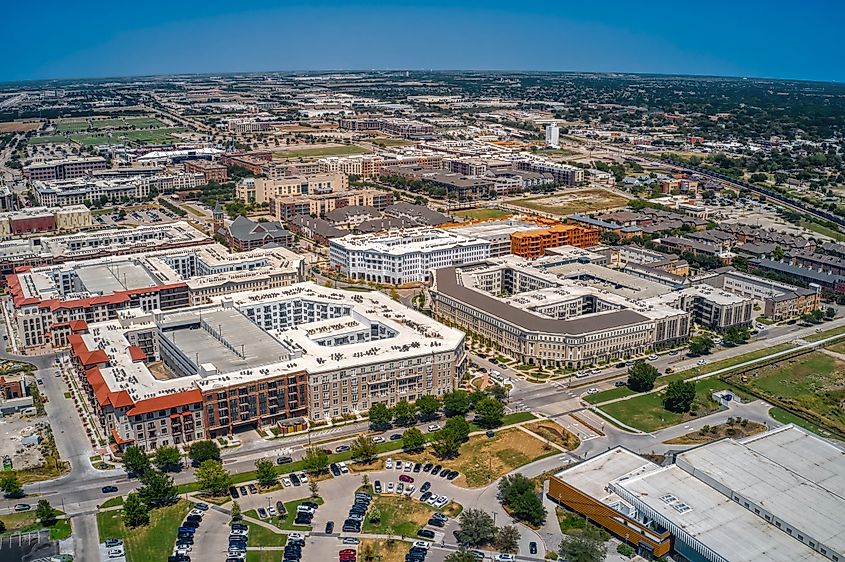
Frisco, located in the Dallas-Fort Worth metro area, has experienced explosive growth in recent decades. The city expanded rapidly with master-planned communities, commercial nodes, and highway systems. Frisco lacks a traditional downtown because planners prioritized accessibility, residential space, and economic development over a centralized urban hub.
Multiple activity centers, including shopping areas, sports complexes, and business parks, serve the city’s dispersed population. Frisco demonstrates how rapid suburban expansion can produce thriving cities without a conventional downtown structure.
Factors Behind Cities Without Downtowns

Several factors explain why these cities lack a traditional downtown:
-
Master Planning: Cities like Irvine, Columbia, and Frisco were intentionally designed without a single urban core. Planners emphasized neighborhood hubs to reduce congestion and improve access.
-
Suburban Expansion: Post-war suburbanization encouraged dispersed development along highways. Cities such as Pembroke Pines and Miramar expanded outward rather than upward.
-
Geography: Natural features, including rivers, mountains, and wetlands, can limit centralized urban growth. Anchorage illustrates how geography can shape urban form.
-
Economic Development Patterns: Industrial and business park growth often occurs along transportation corridors rather than in one concentrated downtown.
-
Historical Circumstances: Newer cities or communities built in the 20th century often had no historical core to preserve, making downtown development less relevant.
How These Cities Thrive
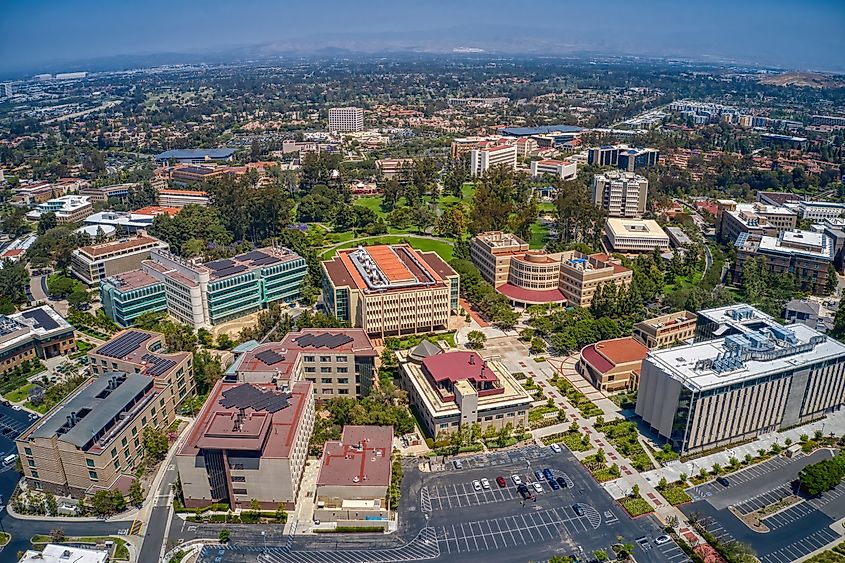
Despite lacking a downtown, these cities can be vibrant and functional:
-
Dispersed Amenities: Residents have access to shopping, offices, and parks across multiple nodes.
-
Community Centers: Neighborhood hubs provide localized social spaces and services.
-
Economic Vitality: Multiple commercial centers distribute economic activity and reduce congestion.
-
Adaptability: These cities can incorporate mixed-use developments in specific nodes to mimic downtown functions.
-
Convenience: Car-oriented planning allows residents to navigate easily between dispersed centers.
The absence of a downtown does not imply a lack of culture or community. On the contrary, these cities often innovate in public space design, recreational opportunities, and residential planning, offering alternative models for urban life.
Rethinking the Heart of a City
Cities without downtowns challenge traditional ideas of urban planning. Whether shaped by planning philosophies, suburban expansion, geography, or historical circumstances, these urban areas demonstrate that a city can thrive without a single central hub. From Irvine’s multiple neighborhood nodes to Anchorage’s spread-out layout, the United States showcases diverse urban forms that adapt to lifestyle, geography, and growth patterns. Understanding these cities helps explain why downtowns are not always essential for economic activity, social interaction, or community identity.
Chart: Cities Without Traditional Downtowns
| City | State | Population (2020) | Reason for No Downtown |
|---|---|---|---|
| Irvine | California | 307,670 | Master-planned with multiple neighborhood hubs |
| Columbia | Maryland | 104,681 | Village centers instead of a single city core |
| Pembroke Pines | Florida | 171,178 | Suburban growth along highways |
| Miramar | Florida | 134,721 | Dispersed commercial nodes and neighborhoods |
| Anchorage | Alaska | 288,000 | Geographic constraints and spread-out development |
| Kent | Washington | 132,319 | Suburban growth and industrial nodes |
| Frisco | Texas | 219,587 | Rapid expansion with dispersed commercial centers |
